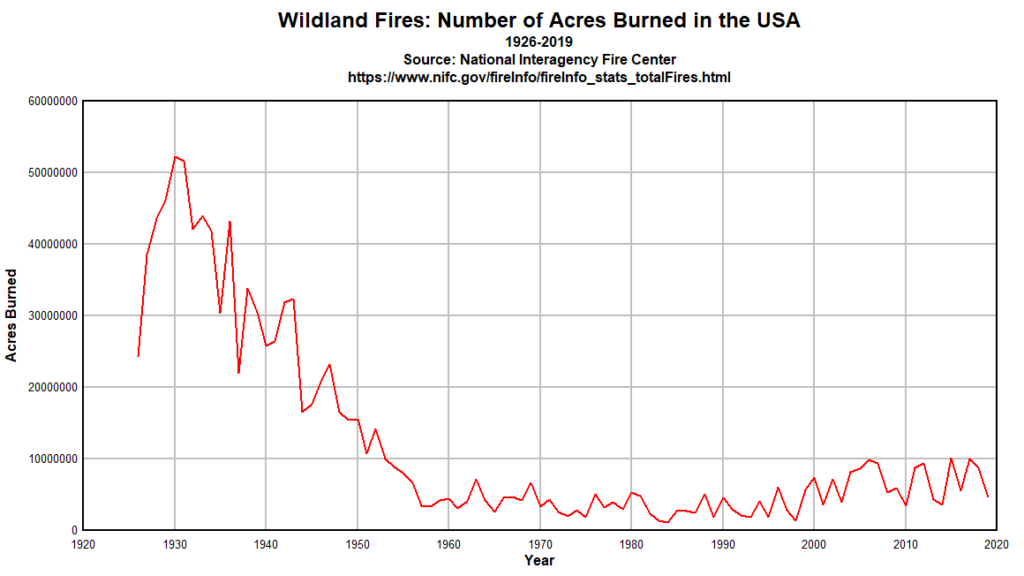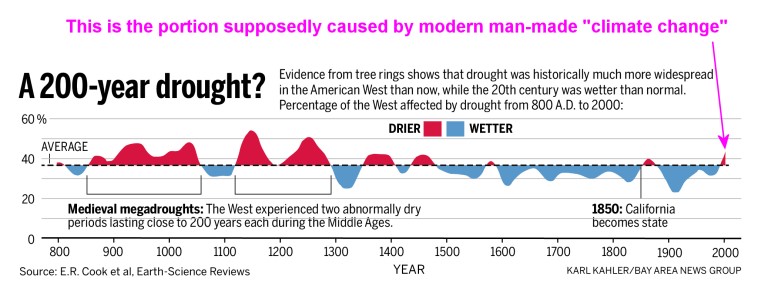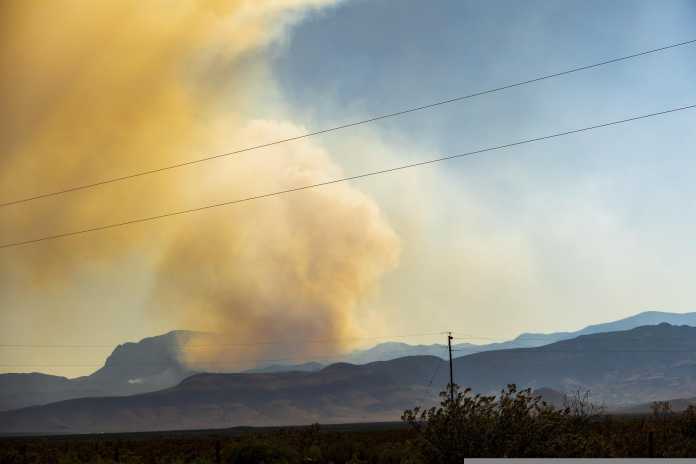A recent Yahoo News story claims wildfires in New Mexico are starting earlier because of climate change. This is false. Although New Mexico’s wildfire season typically reaches its peak in May and June, wildfires in April, and even March, are not uncommon. In addition there is no indication that wildfires are increasing in the United States or that Western drought conditions are historically unusual.
The article, titled “Climate change is why New Mexico’s wildfire season started early this year,” claims that this year’s April wildfires are unusual, writing “Historically, New Mexico’s wildfire season began in May or June, but this year, wildfires sprung up on the drought-parched New Mexican desert in April.”
Data show this year’s wildfires are not unique. Research shows that between 1996 and 2013 alone New Mexico experienced 12 wildfires of greater than 40 km2 in size spanning 7 separate years in April and nine wildfires occurring in three separate years which started in March.
Wildfires nationally are actually on the decline historically, as shown in the figure below, with recent upticks, as explained in Climate Realism here, here, and here for example, attributable to changing demographics, forest, and wildfire management plans.

The majority of wildfires in the United States are caused by human ignitions, according to the U.S. Forest Service that number is around 85 percent. Since human populations have been growing, it makes logical sense that more human ignitions may occur in some areas.
Another factor to consider is the spread of early germinating, fast spreading, very flammable invasive cheatgrass across the American West. This invasive grass germinates earlier in the year than native grasses do, then dries out and becomes highly flammable. Environments with cheatgrass have been found to be twice as likely to burn as those without the invasive grass.
The article also claims that climate change is accelerating the conditions needed for out-of-control wildfires.
The author writes:
“Warmer temperatures, causing more evaporation, dry out the landscape and create the conditions for wildfires to break out. In addition, climate change causes more extreme weather, such as unseasonably warm days in winter, and climate change may even be causing stronger winds — another risk factor for fire — due to jet stream disruption.”
As Climate Realism has explained many times, regional, temporary droughts are not climate. Also, droughts in the American West, which is largely a series of deserts, are historically common and expected. As explained in a Climate Realism post here, historically many western droughts have been even more severe and long lasting than the one the Southwest is presently experiencing. (See the figure below)

Once again, a lack of journalistic integrity in a desperate effort to push the narrative that we face a human caused climate crisis resulted in one journalist drawing faulty conclusions from poor data, while ignoring contradictory research and data. The real tragedy is the lack of acknowledgement that wildfires are a natural part of the ecosystem and can be minimized or controlled with good ecosystem management and technology. Focusing resources on the latter will likely save more lives and properties than futilely trying to control the climate by cutting greenhouse gas emissions.


















